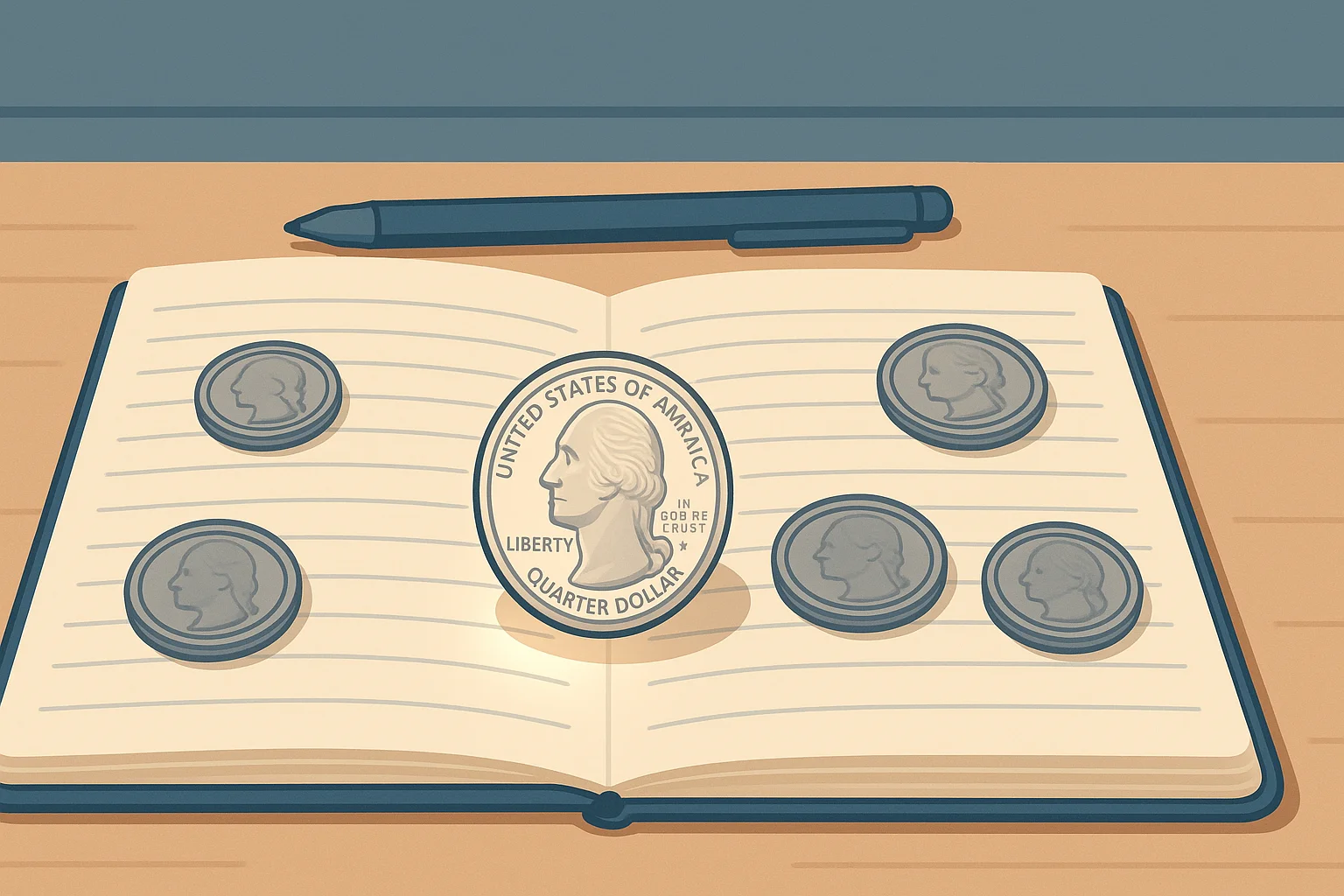Should You Pay Attention to a 1965 Quarter? Collector’s Recommendations
The 1965 quarter may look ordinary at first glance, but it holds an important place in U.S. coinage history. This was the year the U.S. Mint stopped producing 90% silver quarters and introduced the copper-nickel clad design that is still used today. For collectors, that shift makes the 1965 quarter both common and intriguing—common because millions were made, but intriguing because a handful of rare errors and high-grade examples have become highly valuable.

Why 1965 Quarters Matter to Collectors
The Coinage Act of 1965 marked a turning point in American money. Rising silver prices forced the U.S. Mint to remove silver from circulating coins. Quarters dated 1965 onward were struck on copper-nickel clad planchets, ending more than 170 years of silver quarter production.
Key details that make this coin notable:
Composition Change: Before 1965, quarters were 90% silver. From 1965 forward, they became copper-nickel clad.
No Mint Marks: All 1965 quarters lack mint marks, making them easy to date but harder to trace by mint origin.
Transitional Period: A few silver planchets leftover from 1964 may have been used in error, producing one of the most famous coin mistakes in modern history.
For many collectors, the 1965 quarter represents the dividing line between two eras—the silver age and the clad age.
How Much Is a 1965 Quarter Worth?
Most 1965 quarters still in circulation today are worth only face value. However, value can increase dramatically based on condition and rarity of errors.
Here’s a breakdown of values by grade:
Grade | Estimated Value |
Fair to Good | $0.25 – $1 |
Extremely Fine | $5 – $15 |
MS65 (Uncirculated) | $22 – $28 |
MS67 | $400 – $850 |
MS68 (Rare) | Up to $16,500 |
Circulated examples: Found in change, usually worth face value.
High-grade mint state coins: Sharp strikes, bright luster, and no signs of wear can make these coins valuable, especially in grades above MS65.
MS68 specimens: Extremely rare and can reach five-figure auction prices.
Collectors recommend examining details like luster, strike sharpness, and surface marks, since tiny differences in preservation can mean the difference between pocket change and a premium auction piece.
The Rare 1965 Silver Quarter Error
One of the biggest reasons collectors still pay attention to the 1965 quarter is the possibility of finding a silver error coin. During the transition away from silver, some leftover silver planchets from 1964 were mistakenly struck with the 1965 date. These transitional errors are among the most prized modern quarters.
Key traits of a silver error quarter:
Composition: 90% silver and 10% copper.
Edge Color: A genuine silver coin will show a solid silver edge, while clad quarters have a copper stripe visible along the side.
Weight: Silver quarters weigh slightly more, around 6.25 grams, compared to the standard clad quarter at 5.67 grams.
Sound: Silver coins produce a higher-pitched “ring” when gently tapped compared to the duller sound of clad coins.
These rare 1965 silver quarters have sold for thousands of dollars, depending on condition and grading. Because of their significance, experts recommend professional authentication through services such as PCGS or NGC if you suspect you’ve found one.

Identifying Valuable 1965 Quarters
Not every 1965 quarter is created equal. While most are worth pocket change, certain features increase value. Here’s what to check:
Mint State Condition: Quarters with no wear, strong luster, and sharp detail are always more desirable.
No Mint Mark: All 1965 quarters were struck without mint marks, so grading and condition become the key value factors.
Edge Color: Look for coins without the copper stripe—these could be silver error coins.
Weight Check: Use a jeweler’s scale to confirm if the coin is heavier than standard clad weight.
Error Varieties: Doubled dies, off-center strikes, or misaligned lettering can add value.
By paying attention to these markers, collectors can separate ordinary circulation finds from coins that deserve professional evaluation.
How the Coin ID Scanner App Helps Collectors
For collectors intrigued by the 1965 quarter, sorting through hundreds of coins to find rare varieties can feel overwhelming. This is where digital tools like the Coin ID Scanner app become invaluable. Available on Android and iOS, the app makes identification and collection management more accessible.
Its key features include:
Photo-Based Identification: Simply snap a picture of your coin, and the app analyzes details like year, type, composition, and weight.
Comprehensive Database: With more than 187,000 coins cataloged worldwide, including U.S. quarters, it provides accurate references for comparison.
Smart Filters (Premium): Narrow down searches by metal content, minting years, or errors to save time.
Collection Management: Build a digital archive of your coins, track grades, and record current market values.
AI Coin Helper: An intelligent assistant that helps spot error varieties or confirm unusual traits.
For a collector examining 1965 quarters, the app offers peace of mind: confirming authenticity, providing market value, and ensuring rare finds aren’t overlooked.
What Is Worth Paying Attention To
The 1965 quarter is far more than pocket change. While most examples are common and worth only face value, the year represents a turning point in U.S. coinage history—the end of silver and the start of the clad era. Within that shift lies opportunity:
High-grade mint state coins can bring impressive premiums.
Rare silver planchet errors are among the most sought-after modern quarter mistakes.
Error varieties and unique conditions make even ordinary coins worth a second glance.
For collectors, paying attention to 1965 quarters is both historically rewarding and potentially profitable. With tools like the Coin ID Scanner app, the process of identifying, valuing, and managing these coins becomes simpler, faster, and more reliable.
The next time you find a 1965 quarter in your pocket change, pause before spending it—you might be holding a hidden piece of numismatic history.
